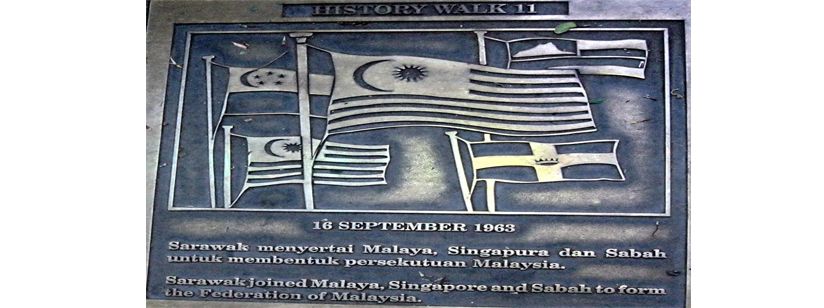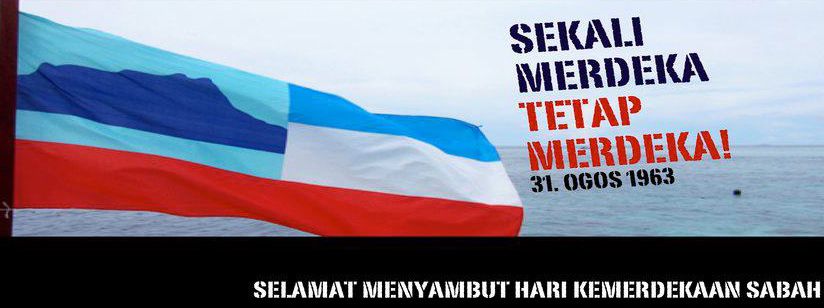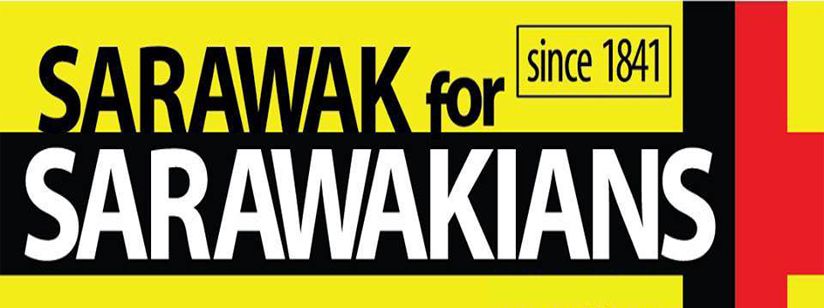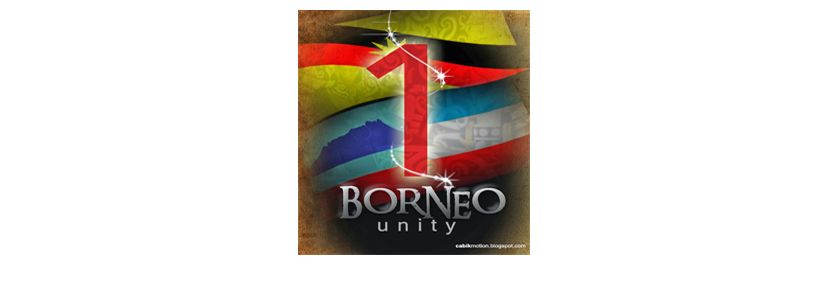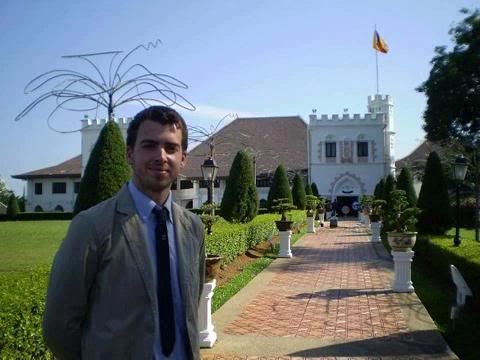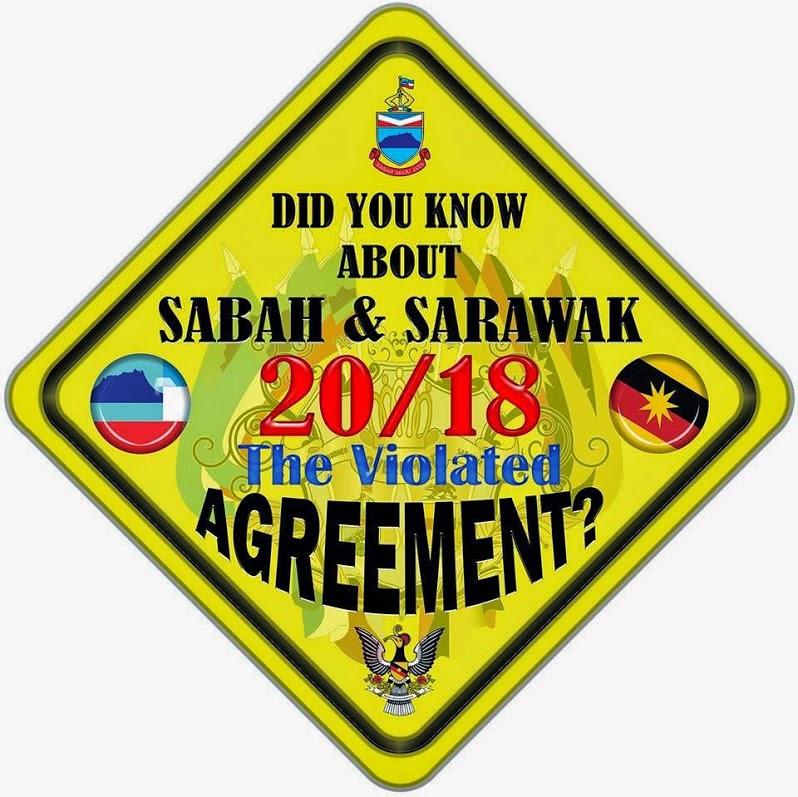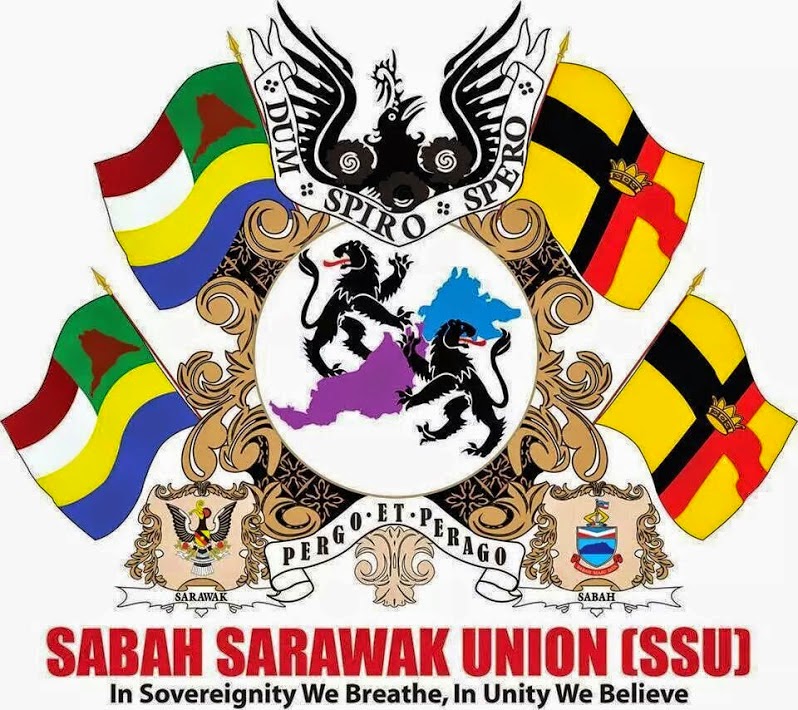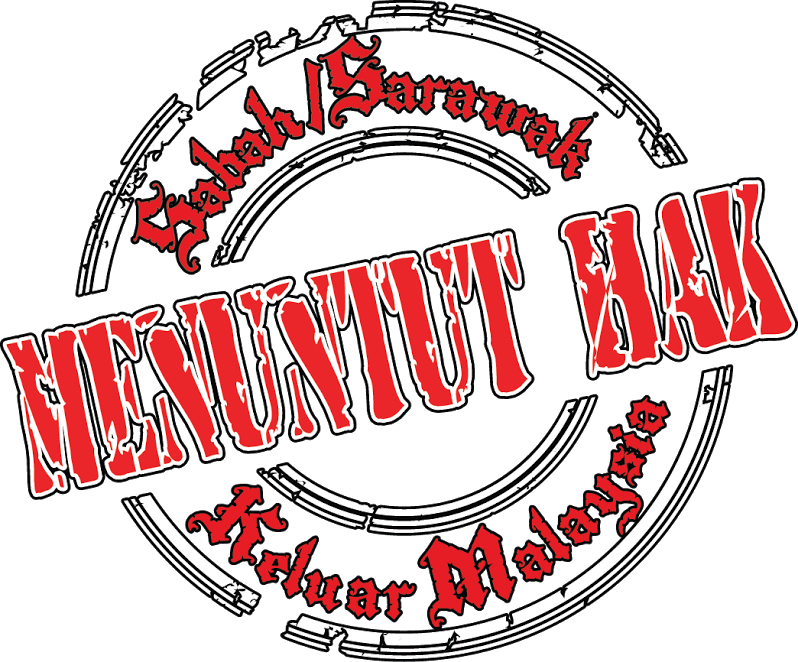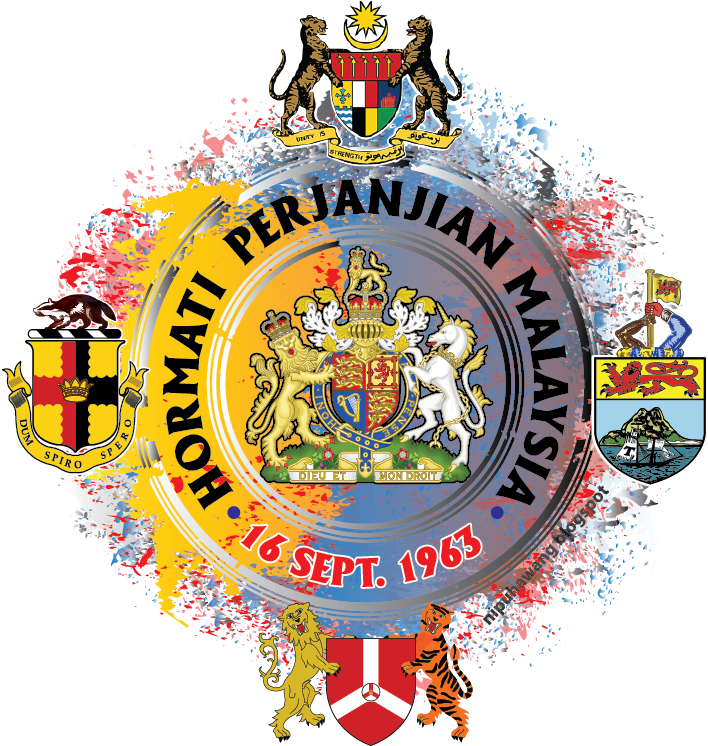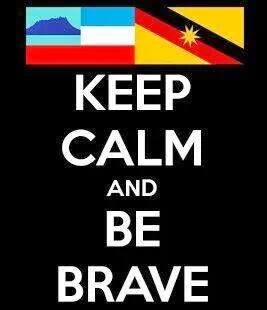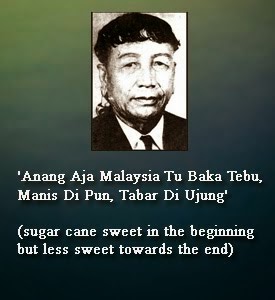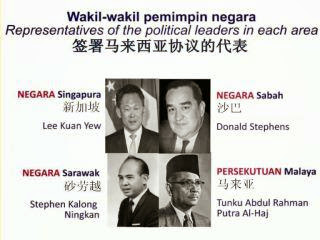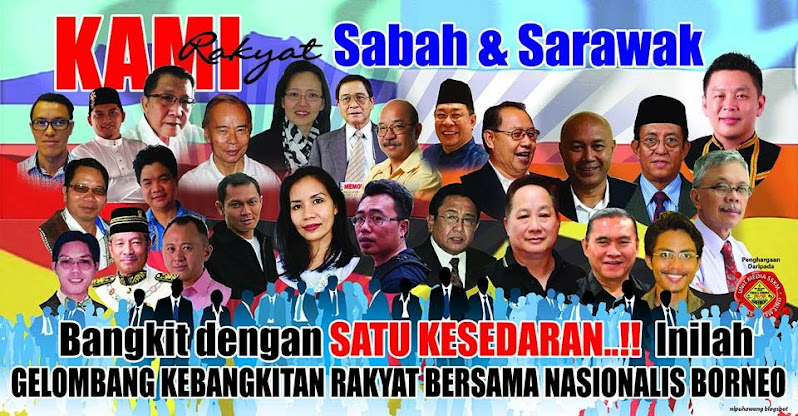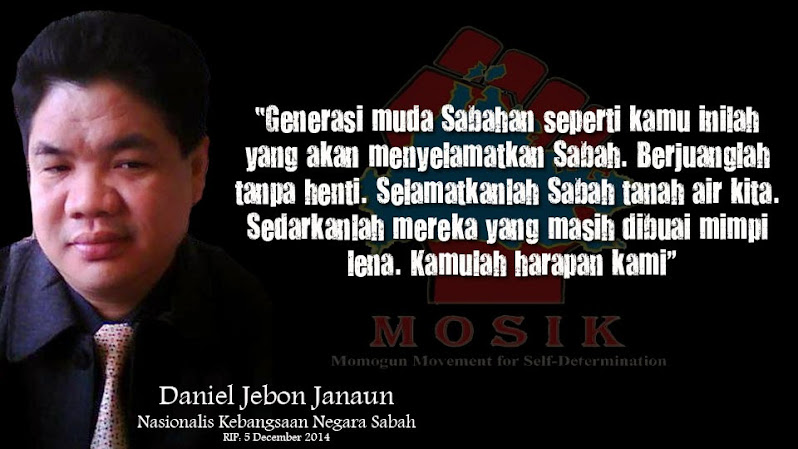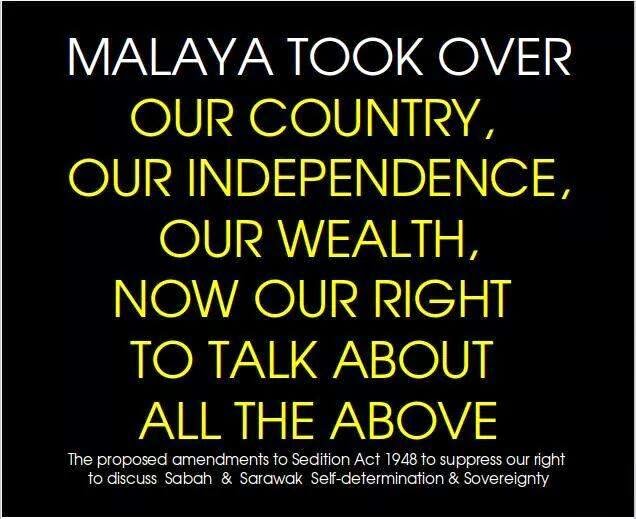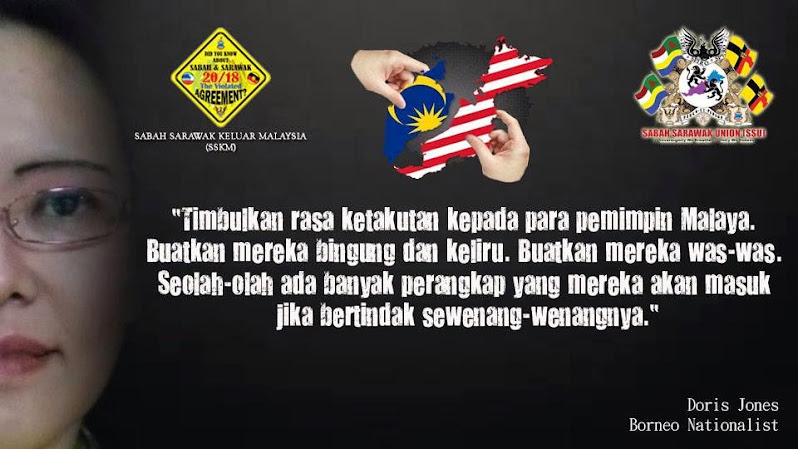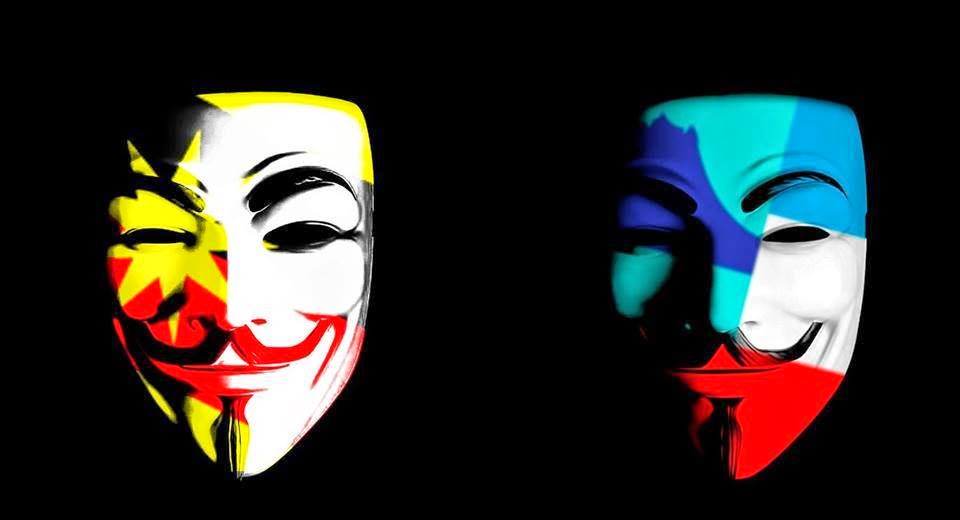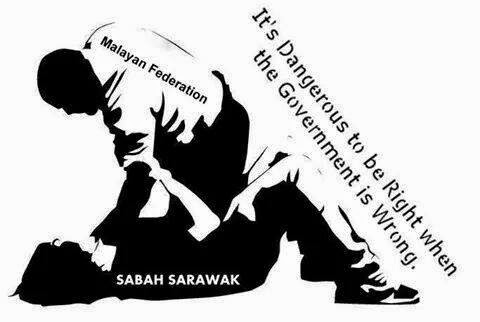Friday 27 July 2012
Thursday 26 July 2012
BRITISH NORTH BORNEO CHARTERED COMPANY
Apparently, Captain W. Raffles Flint was well liked by his subordinates that when he retired and gone back to England, they wrote a letter of appreciation to him which was published in The Singapore Free Press and Mercantile Advertiser on 18 February 1914.
British presence in North Borneo started with the occupation of Labuan island by the British government in 1847. It was made into a naval base for the British navy in its campaign against piracy in this part of the world. In Owen Rutter's book British North Borneo : An Account of its History, Resources and Natives published in 1922, he described how piracy, slavery and headhunting activities in North Borneo had almost depopulate the country and this was further aggravated by the shortage of food when peaceful tribes abandoned all agricultural activity for fear of raiding parties.
In 1865, the United States Consul to Brunei, Mr Charles Lee Moses, obtained a ten years cession of large territories from the Sultan of Brunei. Unfortunate for him, the United States government was not interested in North Borneo. Hence, the rights to these territories were transferred to the American Trading Company of Borneo which was headed by Mr Joseph W. Torrey.
Torrey and associates attempted to set up a settlement in Kimanis which they called Ellena. Their enterprise failed because of disease, desertion and lack of financial backing.
In 1872, "Labuan Trading Company" established itself in Sandakan. The partners of this company were Mr J.D. Ross, Mr Carl Schomburgk and Mr W.C. Cowie who would eventually become the Managing Director in BNBCC.
Mr W.C. Cowie was a Scott and an adventurer. It was reported in the Straits Time dated 30 January 1902 that at one time, the Sultan of Brunei ceded the peninsula of Muara to him for service rendered. He was the White Rajah over the territory but he soon found himself bored with inaction and sold the territory to Rajah Brooke. In 1877, Torrey sold his rights to Baron Overbeck and Alfred and Edward Dent albeit that the lease had expired. Undaunted, the trio took over the lease and formed a syndicate to revive the lease. They successfully obtained in perpetuity 'certain' of the Sultan of Brunei's rights in North Borneo on 29 December 1877.
Picture on the left is the court of directors of BNBCC. Seated from left to right :
1) Mr Harrington G. Forbes, Secretary
2) Sir Charles J. Jessel, Bart., Vice Chairman
3) Mr Richard B. Martin, M.P., Chairman
4) Mr William C. Cowie, Managing Director
5) Mr Edward Dent
Standing in the centre is Captain W. Raffles Flint and standing at the far right at the back is Mr A.T Wardrop. Among them are Dayak (or Dyak as they spelled it in the old days) Jubilee Police Contingent who were in England to take part in the Queen's Diamond Jubilee celebration.
British presence in North Borneo started with the occupation of Labuan island by the British government in 1847. It was made into a naval base for the British navy in its campaign against piracy in this part of the world. In Owen Rutter's book British North Borneo : An Account of its History, Resources and Natives published in 1922, he described how piracy, slavery and headhunting activities in North Borneo had almost depopulate the country and this was further aggravated by the shortage of food when peaceful tribes abandoned all agricultural activity for fear of raiding parties.
In 1865, the United States Consul to Brunei, Mr Charles Lee Moses, obtained a ten years cession of large territories from the Sultan of Brunei. Unfortunate for him, the United States government was not interested in North Borneo. Hence, the rights to these territories were transferred to the American Trading Company of Borneo which was headed by Mr Joseph W. Torrey.
Torrey and associates attempted to set up a settlement in Kimanis which they called Ellena. Their enterprise failed because of disease, desertion and lack of financial backing.
In 1872, "Labuan Trading Company" established itself in Sandakan. The partners of this company were Mr J.D. Ross, Mr Carl Schomburgk and Mr W.C. Cowie who would eventually become the Managing Director in BNBCC.
Mr W.C. Cowie was a Scott and an adventurer. It was reported in the Straits Time dated 30 January 1902 that at one time, the Sultan of Brunei ceded the peninsula of Muara to him for service rendered. He was the White Rajah over the territory but he soon found himself bored with inaction and sold the territory to Rajah Brooke. In 1877, Torrey sold his rights to Baron Overbeck and Alfred and Edward Dent albeit that the lease had expired. Undaunted, the trio took over the lease and formed a syndicate to revive the lease. They successfully obtained in perpetuity 'certain' of the Sultan of Brunei's rights in North Borneo on 29 December 1877.
Picture on the left is the court of directors of BNBCC. Seated from left to right :
1) Mr Harrington G. Forbes, Secretary
2) Sir Charles J. Jessel, Bart., Vice Chairman
3) Mr Richard B. Martin, M.P., Chairman
4) Mr William C. Cowie, Managing Director
5) Mr Edward Dent
Standing in the centre is Captain W. Raffles Flint and standing at the far right at the back is Mr A.T Wardrop. Among them are Dayak (or Dyak as they spelled it in the old days) Jubilee Police Contingent who were in England to take part in the Queen's Diamond Jubilee celebration.
| Staff of North Borneo Military Police |
Saturday 21 July 2012
Saturday, July 21, 2012
18 Points
,
20 Points
,
Agreement of Malaysia
,
Exposing the Truth
,
Fact
,
History
,
kongsi cerita
,
Memorandum
,
Report
,
Rights
,
Sabah
,
Sarawak
,
SSKM
No comments
"ENQUIRY" WAS HIGHLY UNRELIABLE & USED TO DENY SABAH SARAWAK REAL INDEPENDENCE BY ANNEXATION INTO NEO-COLONIAL MALAYSIA
Part 1
This "Enquiry" was conducted in a highly questionable manner.
It did not take into account the anti-Malaysia opposition in Brunei and Sarawak, and to a lesser extent in Sabah.
Did they ask the many thousands who were in the streets of Kuching to demonstrate against the British/Malayan "Malaysia Plan" because it was “neo-colonial plan” in the early 1960s?
What sort of opinion poll was it? How far did they go to assess public opinion?
How can you determine the fate of 2 countries by just consulting a few hundred (OR thousand for what it was worth) people?
What proper framework of inquiry and rules did they use to "gauge" people's "feelings"?
(It was not a UN conducted enquiry- But would still be questionable in those days when the UN was manipulated by the major colonial powers).
Should they not have slowed down and held a general referendum instead of rushing Sabah and Sarawak into "Malaysia"?? Even the British Governors of Sabah and Sarawak expressed similar views and said the people were not ready for the Malaysia idea.
It was the fate of many people and the British failed to exercise due care and responsibility to determine whether the people wanted to be in Malaysia and only after the colonial master had carried out a programme to educate and fully inform the people of what they would be walking into.
The massive anti-Malaysia opposition in Northern Borneo erupted including mass demonstrations, the Brunei independence Uprising leading to the protracted Sarawak guerrilla independence war from 1962 to 1990.
These are just some of the questions not thrashed out in the early 1960s. They were in a rush and did not give us a fair chance!
This new colonisation plan was based on many false assumptions and rationales. The 2 main ones are:
1. The British rationalisation for Malaysia was that it would like a combination of 5 countries for joint security against the spread of communism ("red scare") and foreign invasion (original plan included Brunei) fundamentally to defend their economic and strategic interests in South East Asia.
It could be argued that this original idea had already broke down when Brunei was not included in Malaysia and when Singapore left in 1965.
Neither Brunei or Singapore were invaded.
But if we wake up one day we can see that Sabah and Sarawak were INVADED and taken over by Malaya (this was the UMNO & Tunku's private joke played us poor innocents at the time!) The Malayan government in its most patronising way- openly said they would "protect" us - from what?
The British rationale failed. They helped Malayan UMNO invade Sabah and Sarawak not protect them from Malayan invasion despite (Sabah and) Sarawak having a “protectorate” Treaty with Britain in 1888.
Captured from CHAPTER 2 : ENQUIRY IN NORTH BORNEO, Section D. - Summary of Evidence from Indegenous and Chinese Populations and Political Parties ; 118 (e) Status of North Borneo in Malaysia.
=================
Bukti Sabah sebagai bukan satu daripada 13 atupun 14 negeri dalam Malaysia.
Part 2
2. The Malayan UMNO rationalisation was the issue of "racial balance"- combining the Malays and Sabah Sarawak "natives" numbers to counter balance the bigger Singaporean Chinese numbers.
The argument fell flat when Brunei did not "join" - thus the numbers of natives would have been deflated. Then Singapore left in 1965- this means Malays become the majority. It benefitted UMNO's plan for Malay supremacy under the NEP apartheid system now in place since 1969.
The whole Malaysia concept had broken down by 1965. We were left stranded in Malaysia without ever being given the opportunity to say "we also want to get out!"
The fundamental fears many of use still alive and our predecessors feared and expressed openly was being re-colonized by Malaya.
So Tunku A Rahman (who did not dream up "Malaysia" but the British did) wrote to assure us that Malaya would never colonize Sabah or Sarawak.
The 18/20 Points Agreement also reflected this fear of re-colonization.
But assurances and signed guarantees proved useless.
Malaya went ahead to Malayanize the 2 colonies and took control of our destiny and resources. They used our oil resources to develop the Malayan economy and gave us back crumbs! “Bornenonization” and all other rights guaranteed by the Agreements were broken.
In 1973 when Sabah and Sarawak demanded a review of the Malaysia Agreement, this was arbitrarily refused by Razak. How could he deny us our right which was in the Malaysia Agreement? Sweep it under the carpet the usual UMNO way of doing things!
We can ask ourselves what benefit is there for Sabah and Sarawak to remain in Malaysia?
Many of us will agree there is absolutely NONE! Looking at Brunei and Singapore we can only envy them as prosperous and independent little states while Sabah and Sarawak the richest territories have been rdeuced to be the most poverty strickened colinies in Malaya!
The sooner we take Sabah Sarawak out of Malaysia the better!
For Sarawakians remember that 22 July on Sunday is our "independence day".
The British "gave" us our independence on this date in 1963 (Sabah got its independence on 31 August 1963) and by 16 September 1963 this was taken away when Sabah & Sarawak were ANNEXED and colonized in Malaysia under UMNO rule.
SSKM has organised private commemoration of this day in London, Kuching and other Sarawak towns, Dubai and Kuala Lumpur.
If you wish fly the Malayan colonial flag upside down (as a sign of distress) and raise the Sarawak flag of your choice.
Hidup Sabah Sarawak Independence!
Historical Tree Map tracing Sabah & Sarawak independence & colonization to 2012
Corrections
Many of us will agree there is absolutely NONE!
Looking at Brunei and Singapore we can only envy them as prosperous and independent little states while Sabah and Sarawak the richest territories have been reduced to be the most poverty stricken colonies in Malaysia!
***This article was taken from comment posted in http://sabahsarawakmerdeka.blogspot.com/2012/07/enquiry-in-north-borneo.html***
Saturday, July 21, 2012
18 Points
,
Agreement of Malaysia
,
Exposing the Truth
,
Fact
,
International
,
kongsi cerita
,
Sarawak
,
Sharing
,
SSKM
No comments
Sarawak Independence Day: Broadcast in Melbourne Australia on 19 July at "Plenty Valley FM 88.6"
From Australia...
How are you & how is the preparations for Sarawak Independence Day 22 July? Radio Free Sarawak also mentioned this day and published the 18 Points Agreement. Do you follow their broadcasts?
You may be interested to published this news item on Sarawak Independence Day was broadcast in Melbourne Australia on 19 July at "Plenty Valley FM 88.6" .
The Sarawak national anthem was played at the end of the comment.
The broadcast was made in response to the news passed on by you. (Thanks).
CELEBRATION SARAWAK INDEPENDENCE ON 22 JULY 1963
This coming Sunday the London based movement call Sabah Sarawak Keluar Malaysia or SSKM has organised an international celebration of Sarawak Independence Day on 22 July.
Similar celebrations are also being organised in the Sarawak capital Kuching on Borneo Island and other Sarawak cities and towns, London, Kuala Lumpur and in Dubai. In Australia and New Zealand private celebrations have been planned.
Sarawak was an independent sovereign state also known as land of the White Rajahs from 1841 to 1941. It was recognized as sovereign state by the United States in 1850 and Britain in 1863.
The State of Sarawak came into being when the English adventurer James Brooke was rewarded with a part of present day Sarawak by the Brunei Sultanate in 1841 for assisting the Sultan to put down a local rebellion. The Sultan recognised James Brooke as the ruler and Rajah of Sarawak. From that time the first and Second Rajahs began to expand the territory of Sarawak to its present day size. Sarawak was recognized as sovereign state by the United States in 1850 and Britain in 1863.
Sarawak celebrated its 100 years as an independent Kingdom in 1941 and a new Constitution was passed which promised the transition to an independent democratic state from Brooke rule.
In December 1941 Japan invaded and occupied Sarawak till 1945. After the war Britain took over and ruled Sarawak as colony in 1946 when the Third Rajah Charles Vyner Brooke sold Sarawak to Britain for a large sum of money.
This was called "cession of Sarawak" as colony to Britain and was strongly opposed by many Sarawakians.
The anti-cession and independence movement of Sarawak had the sympathy and support of Anthony Brooke the Tuan Muda or heir apparent to the Sarawak Kingdom. Anthony Brooke passed away in March this year. He was 98 years old. Born in 1911 he lived through the reign of the second and third Rajahs and was a part of Sarawak's history.
He continues to be held in high regards by many Sarawakians because of his leadership in the early struggle for Sarawak independence in which he led the non violent anti-cession movement to oppose Sarawak being colonized by Britain. He was banned from returning to Sarawak after 1946 but continued to lead the anti-cession movement until 1951.
While he was overseas things got out of hand when in Dec 1949 members of a splinter group of the movement assassinated of the British Governor Duncan Stewart . The Governor had been transferred from Palestine to Sarawak which was thought to be more peaceful.
Anthony Brooke's activities were suppressed by the British colonial office but he continued to his relationship with Sarawak till his death. Since the 1960s he formed and led a movement called “Peace through Unity” which has a webpage under this name. He was silent on the topic about the incorporation of Sarawak into Malaysia.
Before his passing he drew attention to - The Brooke motto: “Dum Spiro Spero - while I breathe I hope - is a sentiment both of us have taken to heart and aspire to express in all we do”. This is also Sarawak's motto.
On 22 July 1963 Sarawak gained independence from British colonial rule while Sabah became independent on 31 August 1963. By 16 September 1963 both states were incorporated into the new federation Malaysia proposed by Britain and Malaya.
Many critics see this as the annexation of Sabah and Sarawak by the Malayan Gov't and that Britain's had hastily divested its responsibility to the Sarawak & Sabah people by forcing them into the control of the new replacement colonial master.
THIS IS A RECORDING OF THE SARAWAK ANTHEM CALLED “FAIR LAND SARAWAK” WHICH WILL BE PLAYED AT THE INDEPENDENCE CELEBRATIONS
The words of the song slightly update are:
“Fair Land Sarawak
We will never cease to honour thee
and with our loyal sons (& daughters)
Defend your liberty
From your high forest hills,
Down to the open sea
May freedom ever reign
All of us Live in Unity
Proudly our Flag flies high
above our Country Strong and Free
Long may our People live
in Peace and harmony”
Sabah , North Borneo
The British North Borneo Company effectively ruled until January 1, 1942. Japanese forces occupied Sabah from 1942-1945. The North Borneo Armed Constabulary with only 650 men hardly provided any resistance to slow down the Japanese invasion. During Japanese military occupation, the Europeans were interned, public services ceased to exist, and there were widespread poverty, disease and malnutrition.
In June 1945 the Australian 9th Division landed in Brunei and liberated much of North Borneo before the end of the war. North Borneo was placed under British Military Administration until restoration of civil government on July 15, 1946.
The British North Borneo Company did not have the financial resources to reconstruct North Borneo after the destruction of World War II. The major towns had been razed to the ground by allied bombing, and the infrastructure of North Borneo was in total devastation. The British North Borneo Company decided to sell its interests to the British government. The territory was placed under control of the colonial office, and became a British crown colony on July 15, 1946 together with islands of Labuan. The destruction of the former capital Sandakan was so complete that Jesselton was chosen as the new post-war capital. The colonial system of administration was in most ways similar rule during the Company era, retaining the same Residency and District structure; however, as a result of this change in status, North Borneo had access to British government funds for reconstruction.
A Governor and Commander-in-Chief was appointed to administer the colony of North Borneo with the assistance of an Advisory Council consisting of three ex-officio members: a Chief Secretary, the Attorney-General, and the Financial Secretary, together with other members both official and unofficial whom the Governor chose to appoint. In 1950, the Advisory Council was replaced by the Executive and Legislative Councils.
The Executive Council functioned as a Cabinet and was headed by the Chief Secretary. In addition to the Attorney General and the Financial Secretary, it consisted of two officials and four nominated members. The Governor presided at the Executive Council meetings and he alone was entitled to submit questions to the Council.
The Legislative Council consisted of the Governor as President, the usual three ex-officio members, nine official members and ten nominated members.
The high-ranking administrative posts continued to be held by the British, and in fact, it was only in 1957 that the first non-European filled an administrative officer's post.
British North Borneo was granted self-government on August 31, 1963. A little over two weeks later, on 16 September 1963, the state united with Malaya, Sarawak and Singapore, forming the Federation of Malaysia.
Wednesday 18 July 2012
Wednesday, July 18, 2012
18 Points
,
20 Points
,
Agreement of Malaysia
,
Exposing the Truth
,
kongsi cerita
,
North Borneo
,
Rights
,
Sabah
,
Sarawak
,
SSKM
1 comment
Percubaan Sabah untuk Keluar dari Malaysia dulu BUKAN KHABAR ANGIN... TAPI ITU ADALAH BENAR!!!
North Borneo was granted its Independence on 31 August 1963(1). Sixteen days later it formed Malaysia with Sarawak, Singapore and the Federation of Malaya i.e. on 16 September 1963.
Donald Stephens, Tun Fuad as he was known then, was appointed Sabah's first Chief Minister while Datu Mustapha was appointed her first Head of State. Datu Mustapha had expected that as Head of State, he would retain many functions previously in the purview of the all powerful Governor. When he realized that contrary to his expectations, it was the Chief Minister who wielded power, he became frustrated and refused to co-operate with Stephens. It got so bad that the government was unable to efficiently go about conducting the business of governing. The Prime Minister, Tunku Abdul Rahman, mediated and the solution was for Stephens to step down. Stephens stepped down on 31 December 1964 and took up the position of federal minister for Sabah Affairs and Civil Defense. Replacing him as Chief Minister was Peter Lo who previously held the position as Federal Minister without portfolio.(2)
The Straits Times, 24 July 1975, Page 1 |
In June 1965, Lee Kuan Yew who had been championing Malaysian's Malaysia, challenged the capability of federal leaders to govern and suggested that Singapore, Sabah and Sarawak as recent entrants to Malaysia, and perhaps Melacca and Penang as well in view of the high presence of Chinese in their populace, as well as being former Straits Settlements themselves, formed a partition. He said these states could form a new nation. He said those states that preferred a Malay's Malaysia could stay on their own. In mid-July, there were racial clashes between the Chinese and Malays in Singapore which led to the Tunku to decide that Singapore should be booted out. On 9 August 1965, a resolution was passed in the federal parliament to separate Singapore from Malaysia.(3)
The Straits Times, 24 July 1975, Page 1 |
Stephens, now a Datuk, claimed that he was not consulted upon with regard to the booting out of Singapore and he should had been consulted since he was the Federal Minister for Sabah Affair. Together with Peter Mojuntin, the Secretary General of United Pasok Momogun Kadazan Organization (UPKO), he toured the state telling the people that Sabah should re-examine the Twenty Points, the conditions of Sabah's entry into Malaysia. Recalcitrance in Sabah was the least that the Tunku wanted because during this period, the Konfrontasi was ongoing, the Tunku was afraid that this might give President Sukarno of Indonesia, the excuse to step in and annex Sabah into Indonesia.
The Straits Times, 24 July 1975, Page 1 |
There was also speculation that Stephens was going to pull Sabah out of Malaysia and link up with Singapore. If this happened, Sarawak would had followed suit. Hence on 13 September 1965, the Tunku flew into Jesselton and fired Stephesn as Federal Minister for Sabah Affair and Civil Defence. This, the Tunku hoped, would limit his activity in state level. At the same time, the Tunku was already thinking of ways to neutralize Stephens and Tun Datu Mustapha bin Datu Harun became his prime candidate. Tun Mustapha was in Tunku's opinion, the only politician in Sabah with the stature to challenge Stephens. During this time, Tun Mustapha was still the Head of State.(4)
The Tunku encouraged Tun Mustapha to re-enter politic. Tun Mustapha was initially reluctant but agreed later when Tunku agreed to his requests for a fair degree of autonomy, logistical and economical assistance from the federal government and the help of a politically trained lawyer. Three days later, Tun Mustapha stepped down as Head of State to challenge Stephens in the incoming first election of an independent Sabah. Syed Kechik was sent to Sabah to help Tun Mustapha to neutralize Stephens.(5)
Syed Kechik engineered the coup to get Datuk Donald Stephens to step down as President of UPKO and retire from politic. He was also to convince UPKO members to force Peter Mojuntin into retirement and that his paper, The Sabah Times would run articles suggesting that USNO and UPKO should merge in the interest of bumiputra unity. In the book, The Politics of Federalism, it insinuated that Tun Mustapha would have sought alternative arrangement to save the face of a long-standing colleague. A passage from the book aptly described the situation, “The two were unwitting actors in a drama written by the federal government, and both felt compelled to play out their roles, however reluctantly”. The book further went on to say that had the encounter was between Stephens and other parties in the Sabah Alliance, he would have emerged unscathed, given his powers of articulation and pursuasion but this encounter was with Kuala Lumpur(6)
I will not go into detail on why Stephens agreed to these(you will have to get a copy of the book for more details), suffice to say that he was outmaneuvered. Meanwhile, Syed Kechik was aware that even with Stephens departure from politics, UPKO still posed a danger. Ganie Gilong, now the President of UPKO, was still calling for a re-examination of the Twenty Points and UPKO enjoyed popular support from the people. Syed Kechik cornered and coerced Ganie Gilong into making a public statement that UPKO would refrain from talking about the Twenty Points publicly but instead would discuss it internally. UPKO's apparent rapprochement with USNO made headlines throughout the country.(7)
Fast forward, Sabah had its first General Election and UPKO had a few Assemblymen elected. The following are a few excerpts from the book which painted the author's opinion of our early politicians:
“For them, to join up with the ruling government could be construed as a patriotic gesture in the interests of the nation. The real motivation for defection, however, was the accorded status of becoming a minister, the accompanying benefits of a line of credit with local banks, and the possibility of a timber concession. These were to be decisive. Neither Sabah politicians nor their public were noted for fidelity in the political arena, where personalities were more important than issues. And in the mind of a poorly-educated and essentially amateur politician, crossing over to USNO was not perceived as that treasonous a political act.
On 2 November 1967, Payar Juman, the UPKO member for Kiulu, resigned from UPKO to join USNO, accusing UPKO of creating political tension in the state and taking the party into the opposition without first having considered the consequences of this for the rank and file....”(8)
On 2 November 1967, Payar Juman, the UPKO member for Kiulu, resigned from UPKO to join USNO, accusing UPKO of creating political tension in the state and taking the party into the opposition without first having considered the consequences of this for the rank and file....”(8)
Stephens was by now financially drained because UPKO was practically bank rolled personally by him. By this and other factors, he acceded to Tun Mustapha's demand that UPKO was to be disbanded in the interest of bumiputra solidarity and its members absorbed by USNO.
Stephens was sent to his political exile in the form of a High Commissioner post in Australia. Out maneuvered and cut off from his power base in Sabah.
After the race riot on 13 May 1969, a state of emergency was declared throughout Malaysia. Tun Mustapha was appointed Chairman of the State Operations Committee (SOC) with the power to detain. Tun Mustapha used this power to detain his political opponent. Many opponents were detained including Yap Pak Leong, an independent Assemblyman who was the sole opposition in the Legislative Assembly and Khoo Tao Choon, the brother of Deputy Chief Minister Khoo Siak Chew.(9)
Meanwhile, Syed Kechik felt that the attachment of Sabah Muslims to Islam was more nominal than devoted and he worked on a concept of establishing an organization to promulgate Islam in Sabah. He felt that Islam could be a binding and rallying force in USNO as it is in UMNO in Malaya. There was also concern that if the majority of Kadazan Christians were to allign themselves with the Chinese, they could emerge as a new power base. He mooted the idea of setting up United Sabah Islamic Association (USIA) to Tun Mustapha who readily agreed to it since he had wanted Sabah to be Muslim and Sabah's language to be Malay, in order to bring the state closer to the situation in Malaya.(10)
The book said Syed Kechik did not anticipate the zeal of USIA workers in getting converts even to resort to pressure and intimidation. All he could do was put up with it tacitly. He also did not deny that there were missionaries being expelled in Sabah in that period but explained it away simply as their passes having expired and not renewed. Nonetheless, he admitted that there were instances where passes were simply terminated. He also conceded that there were instances where converts received rewards like money, promotion and timber areas from Tun Mustapha for their conversion.(11)
The Legislative Assembly's five year term was coming to an end in April 1972. Peter Mojuntin, USNO Assemblyman for Moyog, wrote a letter in 1970 addressed to the Prime Minister then, Tun Abdul Razak, accusing Tun Mustapha of persecuting Christians, running a police state and covering dishonesty with dishonesty. Hundreds of copies of this letter were in circulation in Kuala Lumpur and Kota Kinabalu. This was the first salvo initiated by Mojuntin to organize a challenge against Tun Mustapha. In February 1971, Mojuntin announced that he would form a new political party, Union of Sabah People (USAP), however, this did not materialize eventually and Mojuntin bade his time. (12)
Eventhough emergency regulations had been lifted for some months, Tun Mustapha was still wielding the detention powers. The book says this was an indulgence given by Tun Razak who was very well aware how the wealthy Chief Minister could personally play in helping out UMNO. One way to keep Tun Mustapha loyal was to give him the detention power.(128)
By 1974, Tun Mustapha had become an embarrassment to leaders in Kuala Lumpur who found themselves impotent to reign in the wily Chief Minister.
There were also rumour that Tun Mustapha was going to pull Sabah out of Malaysia. The rumour was taken seriously for Tunku Abdul Rahman, the former Prime Minister of Malaysia had issued a public plea to Tun Mustapha not to pursue secession. (A) The secession rumour was probably the final straw for Tun Razak. Tun Razak summoned Datuk Harris Salleh to Kuala Lumpur and told him that should Tun Mustapha declare Sabah's independence, he would declare emergency, send in troops and install Datuk Harris as Chairman of the SOC. Tun Razak also impressed on Datuk Harris that a new party had to be formed to challenge USNO. The book says Datuk Harris told Tun Razak that the only politician with sufficient stature to lead an opposition against USNO was Tun Fuad Stephens. A few weeks later, after a discussion with Tun Razak, Tun Fuad agreed to provide leadership.(16)
On the morning of 15 July 1975, Datuk Harris Salleh, Datuk Ghani Gilong, Datuk Peter Mojuntin, Datuk Salleh Sulong and Mohammed Noor Mansoor escorted by the police, announced at the main lounge of Borneo Hotel, the formation of Bersatu Rakyat Jelata Sabah (BERJAYA).(14)
The rest, you must read the book yourself. Source : The Politics of Federalism : Syed Kechik in East Malaysia
(1) Pg 8
(2) Pg 9
(3) Pg 11
(4) Pg 17
(5) Pg 18
(6) Pg 26
(7) Pg 27
(8) Pg 89
(9) Pg 101
(10) Pg 102
(11) Pg 108
(12) Pg 127
(13) Pg 128
(14) Pg 145
(15) Pg 146(16) Pg 158
(A) Source - The Straits Times 24 July 1975 : Tunku's plea to Tun M: Don't Pull Out
The Politics of Federalism : Syed Kechik in East Malaysia
***Source taken from http://despiritofsabahan.blogspot.com/2012/03/percubaan-sabah-untuk-keluar-dari.html ***
***Source taken from http://despiritofsabahan.blogspot.com/2012/03/percubaan-sabah-untuk-keluar-dari.html ***
Wednesday, July 18, 2012
Exposing the Truth
,
Fact
,
History
,
News
,
Rajah Charles Brook
,
Report
,
Rights
,
Sarawak
,
SSKM
,
United Nation
No comments
Fact about Sarawak!
Tuesday 17 July 2012
The Kaul Festival of Dalat
The annual Kaul Festival of Dalat (specifically Kpg. Medong) is held on January 1st every year (villages within the area celebrate around closer dates), as opposed to the Kaul of Mukah, which is celebrated on the 3rd week of April. This festival is a large and pagan festival celebrated by the Melanaus of Sarawak. The Kaul in Dalat does not have the “Tibau”, the large swing that men jump on as part of the festivities.
(Picture taken from: Learn Melanau)
The festival’s ritual ceremony starts when the Serarang, made from sago, bamboo and meduk leaves, are placed on the boats or tongkang.Offerings are placed in a container containing, chicken eggs, yellow glutinous rice, tobacco leaves and betel leaves. The Serarang is part of the Melanau Liko belief system in the Sea Deity, Ipouh. The festival is to appease Ipouh and provide offerings.
The ceremony is led by the Bapa Kaul (Kaul Father), who undergoes the ritual cleansing or purification before beginning the ceremony.
During the 3 days of the festival, no animal are allowed to be slaughtered within the borders of the village, already marked with red flags. Sago palms (staples of the Melanau) are also not to be felled. Gunshots and fireworks aren’t allowed because peace and quiet must avail in the surrounding area where the ritual is being held.While the Serarang is carried around the village, no one should paddle their festival boats against the approved direction.
The tongkang, which carries the Serarang leads 60-100 small boats, that travels behind or beside it only. They act as guards of the main tongkang.
[source:dayakgold @ The Indegenious People of Borneo]
Why Independence are the best for Borneo-Sabah & Sarawak.
That question could not be more clear, straightforward and fair, a point I am pleased to see has been acknowledged by many commentators and indeed by few international parties, whatever their views on independence itself. There are, inevitably, some voices among the anti-independence camp who have cried foul at the question – but really, what are they afraid of? It seems "they" know they are losing the argument and are now scared stiff of losing the agreement which are well known it is null and void.
But while I welcome the international interest, it is the people of Borneo who need to have their say – so I urge as many people as possible to contribute to the petition we have launched. That is especially important in a discussion about how the substantial body of opinion in Borneo which favors greatly increased powers for independence . It is crucial the options open to people are not constrained by Unitary Nation string-pulling.
The people of Borneo will be in charge. Our future, our resources, our opportunities will be in our hands. Independence will give us, the people of Borneo - Sabah & Sarawak, the opportunity to make decisions in our best interests.
And that means we will be able to make Sabah & Sarawak the country we all know it can be – a wealthier and fairer nation. A country that speaks with its own voice, stands taller in the world and takes responsibility for its own future.
Kindly draw your signature to SSKM petition in support to our cause. This is our rights, pride and dignity. [Please note this is not a petition which affiliated to any party in politics] @ :http://www.gopetition.com/
Saturday 14 July 2012
Monday 9 July 2012
ENQUIRY IN NORTH BORNEO
Captured from CHAPTER 2 : ENQUIRY IN NORTH BORNEO, Section D. - Summary of Evidence from Indegenous and Chinese Populations and Political Parties ; 118 (e) Status of North Borneo in Malaysia.
=================
Bukti Sabah sebagai bukan satu daripada 13 atupun 14 negeri dalam Malaysia.
Hydropower projects in Sarawak 2008-2020
UNESCO World Heritage site to be partially submerged:
The SEB presentation indicates the locations of twelve proposed hydropower projects in the East Malaysian state of Sarawak planned for the 2008 to 2020 period. It is to be expected that all of the proposed dams will adversely affect indigenous communities living in Borneo's unique tropical rainforest environment. If they are to be realized, several thousand natives of Sarawak's interior will lose their traditional lands and will have to be relocated in other areas. One of the proposed projects, a 220 MW-dam on the Tutoh river in North-eastern Sarawak, would submerge parts of the Mulu National Park that is listed as a UNESCO World Heritage site.
Please give your support to this petition for your country:
http://www.avaaz.org/en/petition/STOP_BARAM_DAM_SAVE_SARAWAK_FOREST_AND_RIVER/
The SEB presentation indicates the locations of twelve proposed hydropower projects in the East Malaysian state of Sarawak planned for the 2008 to 2020 period. It is to be expected that all of the proposed dams will adversely affect indigenous communities living in Borneo's unique tropical rainforest environment. If they are to be realized, several thousand natives of Sarawak's interior will lose their traditional lands and will have to be relocated in other areas. One of the proposed projects, a 220 MW-dam on the Tutoh river in North-eastern Sarawak, would submerge parts of the Mulu National Park that is listed as a UNESCO World Heritage site.
Please give your support to this petition for your country:
http://www.avaaz.org/en/petition/STOP_BARAM_DAM_SAVE_SARAWAK_FOREST_AND_RIVER/
Friday 6 July 2012
In search of the white Rajah
In search of the White Rajahs: Actress Joanna Lumley beside the memorial to Sir Charles Brooke, during the filming of a BBC documentary about the kingdom
The antics of Princesses Gold, Pearl and Baba, as they were nicknamed by locals, fascinated the press in both Britain and America — and by the Thirties Sarawak had become something of a music-hall joke.
As he grew older, Vyner appeared to lose interest in the day-to-day business of government and considered abdicating. Since his brother Bertram had suffered a nervous breakdown and was incapable of rule, his natural successor was his nephew, Anthony.
In 1939, during one of Vyner’s annual pilgrimages to England for the flat-racing season, the 23-year-old heir apparent was left in charge of the country for six months.
He made a good impression on the British Colonial Office, despite his aunt Ranee Sylvia accusing him of inflated self-importance. She reported, among other things, that he had attached a gold cardboard crown to his car and ordered ox-carts and rickshaws to draw aside as he passed.
He denied these charges, but he was never allowed to inherit the rule of Sarawak because in 1946 Vyner agreed to cede it to the British Crown in return for a substantial financial settlement for him and his family. So it became Britain’s last colonial acquisition.
After failing in a long legal battle to have the sale of Sarawak reversed, Anthony began a second career as a self-styled ‘ambassador-at-large for the people of the world’, travelling the globe and campaigning for peace.
This put an increasing strain on his marriage to Kathleen Hudden, the sister of a Sarawak government official. They had three children but eventually separated, not least because of his increasingly bizarre beliefs.
At one point, he joined a New Age Commune in North-Eastern Scotland and adopted their belief that flying saucers would one day bring ‘peace on earth and to the brotherhood of man’.
He and Kathleen finally divorced in 1973 when he told her he was about to be contacted by extra-terrestrials and did not want her caught up in whatever dramas ensued.
He went on to marry a peace campaigner from Sweden who was 18 years his junior. Together they travelled the world, producing a newsletter which focused on issues, including environmental protection and the rights of indigenous people, before finally settling in New Zealand, 5,000 miles from the land he once dreamed of ruling.
We will never know how Sarawak would have fared if he had ruled for longer than those brief six months, but these details of his later life suggest one thing. When it came to continuing his family’s tradition of idiosyncratic government, history would not have been disappointed in Anthony Brooke, the last of the White Rajahs.
source : BBC Documentary archive
Thursday 5 July 2012
Sindurang Bulakang
In search of Simon [Sindurang Bulakang]: a pioneer defender of Kadazan rights in colonial North Borneo.
=============================
In 1910, the Dusun of Papar engaged the services of an English lawyer to summon the North Borneo (Chartered) Company administration to answer to charges that the Company had erred in selling land owned by members of the community to the railway and to plantation estates, thus violating the rights of the people. The community also alleged that the estates which had sprung up in the area had violated the customs and traditions of the people by destroying the graveyards of the community and scattering the remains of the dead. The action to sue the Company Government was the culmination of almost three years of unceasing and untiring efforts by Dusun leaders to champion the community's rights. The outcome of the lawsuit, however, was rather mixed. The Judicial Commissioner ruled that the government and the estates had erred in encroaching into some of the Dusun-owned lands, and they were asked to compensate those who had suffered losses. However, in its entirety, the ruling did not favor the community, as the Government and the estates were asked to compensate the Dusun according to the price that a Dusun would sell to another Dusun; they were not asked to return the land they had taken. Not happy with the ruling, the Dusun and their English lawyer intended to appeal, but were prevented from doing so by a series of measures introduced by the government aimed at discouraging the appeal. The matter dragged on for another ten years before a Parliamentary Paper in 1920 more or less absolved the Government from responsibility except for several matters deemed to be related to the case. However, by 1920, interests in the case had waned and many of the Dusuns who had fought for their rights were already of advanced age and the matter was allowed to slowly fade away, so much so that little could be recalled by the community with regard to the case. In a sense, the case was totally forgotten by the community.
source : North Borneo History
=============================
In 1910, the Dusun of Papar engaged the services of an English lawyer to summon the North Borneo (Chartered) Company administration to answer to charges that the Company had erred in selling land owned by members of the community to the railway and to plantation estates, thus violating the rights of the people. The community also alleged that the estates which had sprung up in the area had violated the customs and traditions of the people by destroying the graveyards of the community and scattering the remains of the dead. The action to sue the Company Government was the culmination of almost three years of unceasing and untiring efforts by Dusun leaders to champion the community's rights. The outcome of the lawsuit, however, was rather mixed. The Judicial Commissioner ruled that the government and the estates had erred in encroaching into some of the Dusun-owned lands, and they were asked to compensate those who had suffered losses. However, in its entirety, the ruling did not favor the community, as the Government and the estates were asked to compensate the Dusun according to the price that a Dusun would sell to another Dusun; they were not asked to return the land they had taken. Not happy with the ruling, the Dusun and their English lawyer intended to appeal, but were prevented from doing so by a series of measures introduced by the government aimed at discouraging the appeal. The matter dragged on for another ten years before a Parliamentary Paper in 1920 more or less absolved the Government from responsibility except for several matters deemed to be related to the case. However, by 1920, interests in the case had waned and many of the Dusuns who had fought for their rights were already of advanced age and the matter was allowed to slowly fade away, so much so that little could be recalled by the community with regard to the case. In a sense, the case was totally forgotten by the community.
source : North Borneo History
